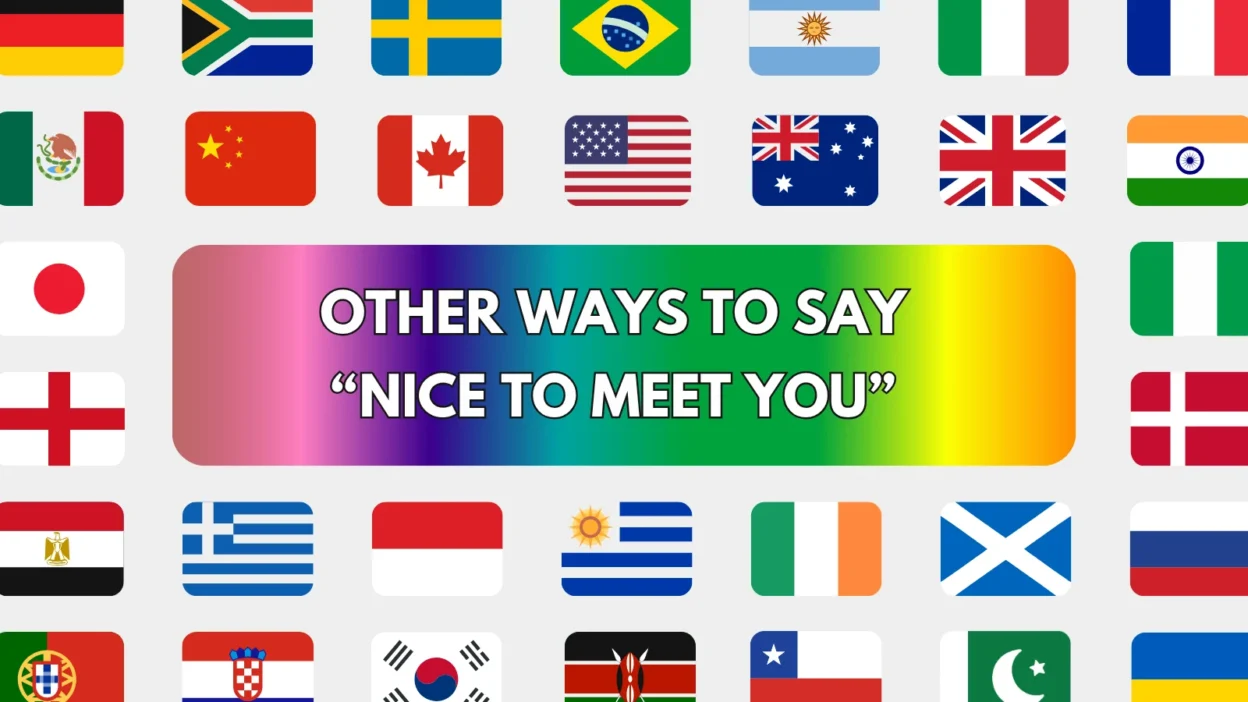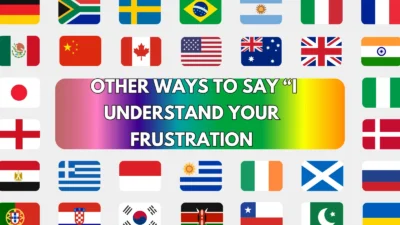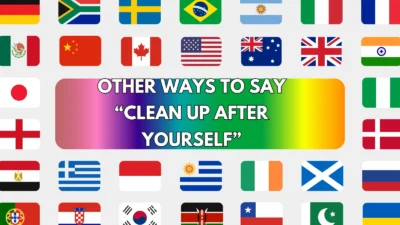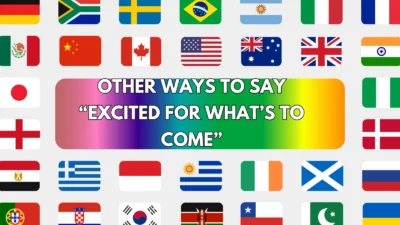“Nice to meet you” is a classic and friendly greeting that helps establish a warm connection when meeting someone for the first time. Whether it’s at work, an event, or online, there are many other ways to express the same sentiment — each with a slightly different tone or level of formality. Using the right phrase can help you sound more genuine, confident, and natural.
Here are 25 thoughtful alternatives to “Nice to meet you” with meanings, explanations, examples, and tones to help you express yourself perfectly in any situation.
1. Great to meet you
Meaning: A friendly and upbeat way to greet someone.
Detailed Explanation: Slightly more enthusiastic than “nice to meet you,” showing genuine interest.
Scenario Example: Great to meet you — I’ve heard so many good things about your work.
Best Use: Professional or casual settings.
Tone: Warm, approachable.
2. Pleasure to meet you
Meaning: A polite and formal alternative.
Detailed Explanation: Often used in business or first-time introductions.
Scenario Example: Pleasure to meet you — I’ve been looking forward to this conversation.
Best Use: Professional or formal events.
Tone: Respectful, courteous.
3. Lovely to meet you
Meaning: Adds a friendly and positive vibe.
Detailed Explanation: Expresses warmth and kindness right away.
Scenario Example: Lovely to meet you — I’m glad we finally connected.
Best Use: Social or friendly introductions.
Tone: Gentle, warm.
4. It’s a pleasure meeting you
Meaning: Expresses genuine enjoyment of the introduction.
Detailed Explanation: Slightly more polished and formal than the standard phrase.
Scenario Example: It’s a pleasure meeting you — I’ve admired your work for years.
Best Use: Professional or semi-formal contexts.
Tone: Polite, sincere.
5. So glad to meet you
Meaning: Conveys genuine happiness about the encounter.
Detailed Explanation: Adds enthusiasm and sincerity.
Scenario Example: So glad to meet you — I’ve been hoping to collaborate with you!
Best Use: Networking, personal introductions.
Tone: Friendly, upbeat.
6. Delighted to meet you
Meaning: A refined and formal expression.
Detailed Explanation: Perfect for elegant introductions and first impressions.
Scenario Example: Delighted to meet you — I’ve heard remarkable things about your work.
Best Use: Business, diplomatic, or professional introductions.
Tone: Polite, elegant.
7. Happy to meet you
Meaning: Communicates warmth and friendliness.
Detailed Explanation: Sounds cheerful without being overly formal.
Scenario Example: Happy to meet you — I’m excited to learn more about your project.
Best Use: Work meetings, casual introductions.
Tone: Positive, approachable.
8. It’s good to meet you
Meaning: A comfortable, neutral greeting.
Detailed Explanation: Less formal but still polite and respectful.
Scenario Example: It’s good to meet you — I’ve been following your work for a while.
Best Use: Everyday business or social contexts.
Tone: Friendly, respectful.
9. Wonderful to meet you
Meaning: A strong and cheerful alternative.
Detailed Explanation: Emphasizes delight and enthusiasm.
Scenario Example: Wonderful to meet you — I’ve really enjoyed our conversation.
Best Use: Networking, events, or friendly meetings.
Tone: Enthusiastic, kind.
10. Nice meeting you
Meaning: A slightly shorter, informal version of the original phrase.
Detailed Explanation: Common in casual or quick introductions.
Scenario Example: Nice meeting you — hope we get to chat again soon.
Best Use: Informal, casual interactions.
Tone: Relaxed, friendly.
11. It’s been great meeting you
Meaning: Perfect for wrapping up an introduction.
Detailed Explanation: Works well when ending a meeting or conversation.
Scenario Example: It’s been great meeting you — I hope we stay in touch.
Best Use: Farewells, networking, casual talks.
Tone: Warm, polite.
12. Pleased to meet you
Meaning: A traditional and polite greeting.
Detailed Explanation: Often used in formal or respectful settings.
Scenario Example: Pleased to meet you — I appreciate you taking the time to meet today.
Best Use: Professional, corporate, or social introductions.
Tone: Respectful, formal.
13. How nice to meet you
Meaning: Shows pleasant surprise or delight.
Detailed Explanation: Sounds natural and friendly in spoken English.
Scenario Example: How nice to meet you — I’ve heard your name many times!
Best Use: Casual, personal introductions.
Tone: Friendly, genuine.
14. Great connecting with you
Meaning: Common in digital or networking contexts.
Detailed Explanation: Suited for online meetings or LinkedIn messages.
Scenario Example: Great connecting with you — let’s schedule a follow-up soon.
Best Use: Virtual or professional introductions.
Tone: Modern, professional.
15. It’s great making your acquaintance
Meaning: A slightly formal, old-fashioned phrase.
Detailed Explanation: Adds a classic, refined touch.
Scenario Example: It’s great making your acquaintance — I look forward to future discussions.
Best Use: Business, formal occasions.
Tone: Polished, sophisticated.
16. Nice connecting with you
Meaning: Suitable for quick professional greetings.
Detailed Explanation: Works well in emails, texts, or meetings.
Scenario Example: Nice connecting with you today — your ideas were inspiring.
Best Use: Business networking, online communication.
Tone: Friendly, professional.
17. What a pleasure to meet you
Meaning: Expresses deep appreciation for the introduction.
Detailed Explanation: Feels more emotional and genuine.
Scenario Example: What a pleasure to meet you — I’ve wanted to speak with you for ages!
Best Use: Networking, warm introductions.
Tone: Heartfelt, polite.
18. Great finally meeting you
Meaning: Used when meeting someone you’ve interacted with before (e.g., online).
Detailed Explanation: Acknowledges anticipation before the meeting.
Scenario Example: Great finally meeting you — our emails don’t do you justice!
Best Use: In-person meetings after virtual contact.
Tone: Friendly, genuine.
19. It’s a joy to meet you
Meaning: Expresses happiness and positivity.
Detailed Explanation: Adds emotional warmth and sincerity.
Scenario Example: It’s a joy to meet you — I’ve admired your work for so long.
Best Use: Personal or meaningful encounters.
Tone: Heartfelt, gracious.
20. Nice to finally meet you in person
Meaning: Perfect when meeting someone face-to-face after online contact.
Detailed Explanation: Recognizes previous interaction while appreciating the moment.
Scenario Example: Nice to finally meet you in person — I feel like we already know each other!
Best Use: Hybrid or remote working contexts.
Tone: Friendly, modern.
21. It’s a real honor to meet you
Meaning: Expresses deep respect for the person.
Detailed Explanation: Used for someone with high status, fame, or expertise.
Scenario Example: It’s a real honor to meet you — your work has inspired me for years.
Best Use: Formal events, professional settings.
Tone: Respectful, admiring.
22. It’s great seeing you
Meaning: Works when you’re meeting someone again after a while.
Detailed Explanation: Shows friendliness and appreciation for reconnecting.
Scenario Example: It’s great seeing you again — it’s been too long!
Best Use: Reunions, casual meetings.
Tone: Warm, familiar.
23. A real pleasure meeting you
Meaning: Slightly more emotional and genuine.
Detailed Explanation: Adds a personal and thoughtful touch.
Scenario Example: A real pleasure meeting you — hope we can work together soon.
Best Use: Business or social introductions.
Tone: Kind, sincere.
24. Wonderful to finally connect
Meaning: Used when meeting virtually or after long anticipation.
Detailed Explanation: Expresses satisfaction after previous communication.
Scenario Example: Wonderful to finally connect — your insights are so refreshing.
Best Use: Online meetings, collaborations.
Tone: Warm, professional.
25. So nice getting to know you
Meaning: Indicates that you enjoyed the interaction.
Detailed Explanation: A friendly way to close an introduction.
Scenario Example: So nice getting to know you — let’s keep in touch!
Best Use: After first meetings, events, or interviews.
Tone: Friendly, closing.
Conclusion
“Nice to meet you” is a classic phrase, but varying it can make your greetings feel more authentic and suited to the moment.
Whether you say “Great to meet you,” “Lovely to meet you,” or “Delighted to meet you,” each version adds its own touch of warmth, professionalism, or enthusiasm.
Choosing the right phrase helps you make a lasting and positive first impression in any situation.




